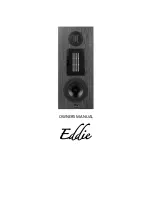
S OLDE R I N G A N D DES OLDE R I N G TECH N I QU E
The FT-757GX circuit boards are tough, but mis
handling during soldering can cause circuit traces
to "lift." While this does not cause permanent
damage to the board, much servicing trouble can
result, because of the tendency for this lifted trace
to break. A few simple precautions will keep your
circuit boards in A-1 condition.
I.
Use only a 12 to 30-watt chisel-tip soldering
iron, with the tip grounded or isolated from
A
C
and
DC
potential. Voltage at the tip can
easily destroy
CMOS
components.
2.
Use only the minimum amount of heat neces
sary to remove a component, or to cause the
solder to "flow" when installing a new com
ponent.
3.
U
SE ONLY
60/40
ROSIN CORE SOLDER.
4.
Use solder removing braid and flux to absorb
excess solder before installing a new com
ponent. A solder sucker can also be used, but
most be handled with care to avoid lifting
traces.
5.
Do not attempt to remove DIP ICs without
first cutting all of the pins on the component
side of the board, unless you have the correct
desoldering equipment (spring-loaded clamp
and all-pin desoldering tip).
If you do lift a trace, don't worry! Read on
to find out how to repair traces like a pro.
NOTES ON USE OF CMOS COMPONENTS:
As CMOS devices
are extremely sensitive to damage
from static
e
lectrici
ty
,
special
precautions must
b
e
observed.
In storage, use only conductive sponge specially
designed
for
CMOS components.
When installing a CMOS part in a socket, or on a
circuit board, be certain that the power is off. In
addition, the technician should rest his hand on the
chassis as the component is inserted, so as to place
his hand at the same potential as the chassis (better
to discharge small amounts of static electricity
through your fingers than through a
$5
IC
!).
When soldering a
CMOS
part onto a circuit board,
use a low-wattage iron, and be sure to ground the
tip with a clip lead, if the tip is not grounded
through a three-wire power cord.
INSERTION OF PARTS ON CIRCUIT BOARDS
All of the below are acceptable ways of inserting
components into circuit board mounting holes.
�
(a) Bend leads slightly
(b) Straight-in mounting
- 3 -
(c) Vertical mounting
(d) Preformed disc ceramic
capacitor
�
(e) Preformed resistor, diode, etc.
Summary of Contents for FT-757GX II
Page 1: ...FT 757GX TECHNICAL SUPPLEMENT YAESU MUSEN CO LTD C P 0 BOX 1500 TOKYO JAPAN...
Page 4: ......
Page 26: ...DISPLAY UNIT 0 DIAL UNIT Inside Front Panel 23...
Page 42: ...LOCAL U N IT PARTS LAYOUT solder side 39...
Page 49: ...1 00W PA U N IT PARTS LAYOUT Component side Solder side 44...
Page 51: ...1 0W PA U N IT PARTS LAYOUT 46 Component side Solder side...
Page 55: ...MEMO 50...







































